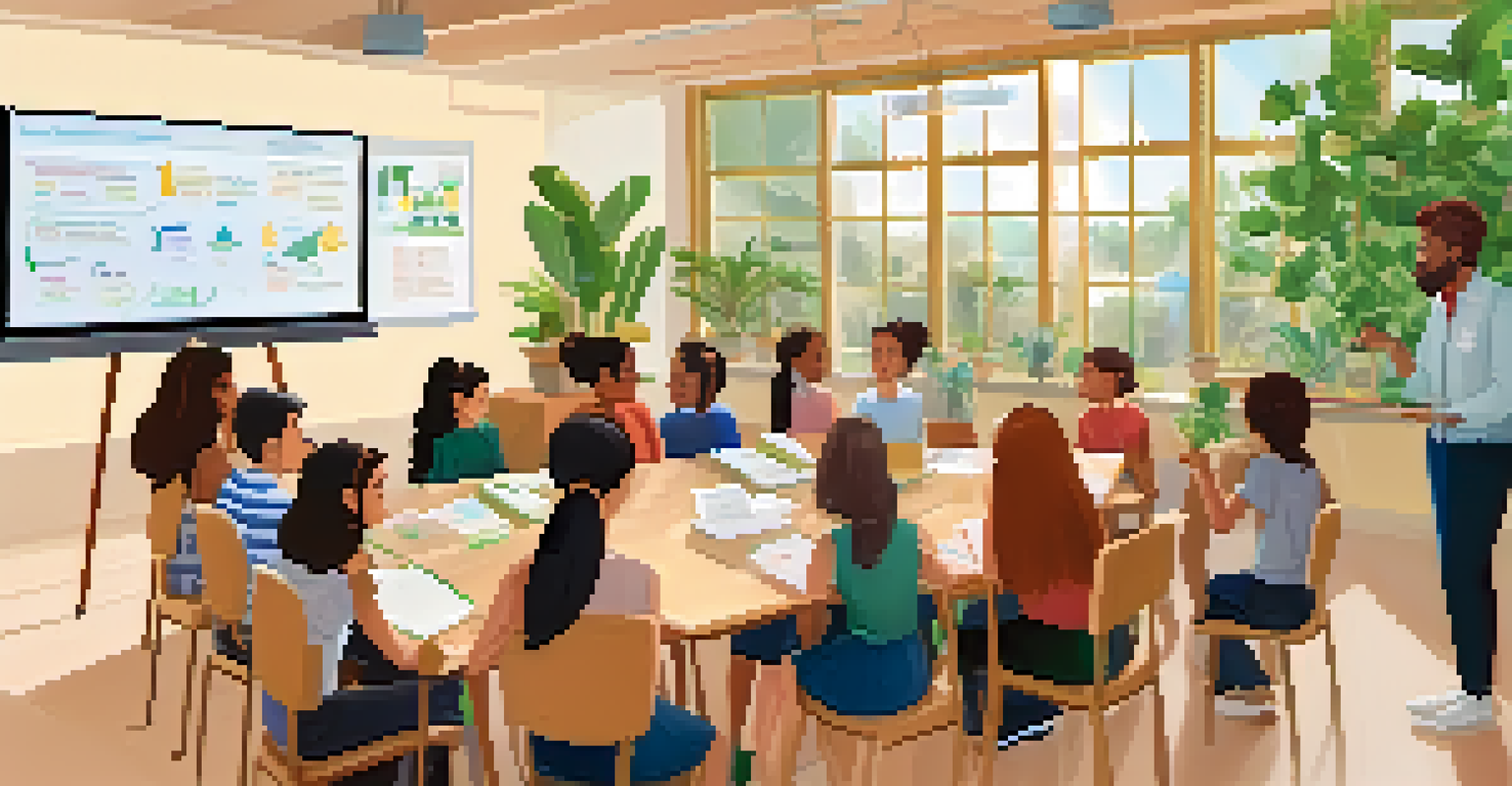The Role of Professional Learning Communities in Innovation

Understanding Professional Learning Communities (PLCs)
Professional Learning Communities, or PLCs, are groups of educators that collaborate to improve teaching and learning. These communities foster a culture of continuous improvement, where teachers share strategies, resources, and challenges. By working together, they create a support system that encourages innovation and enhances educational practices.
Alone we can do so little; together we can do so much.
Think of PLCs as a team of explorers navigating uncharted territories in education. Each teacher brings unique insights and experiences, making the journey more enriching. This collaborative effort allows them to discover new methods and solutions that they might not have found working in isolation.
In essence, PLCs break down silos within schools and promote a shared vision. This unity not only drives individual growth but also contributes to a more dynamic and innovative school environment.
The Importance of Collaboration in Innovation
Collaboration is the heart of any successful Professional Learning Community. When teachers come together, they can pool their knowledge and skills, leading to more effective teaching strategies. This collaborative spirit encourages risk-taking and experimentation, which are essential for innovation.

For instance, a group of math teachers might collaborate to develop a new curriculum that integrates technology into their lessons. By sharing their experiences and insights, they can create a more engaging and effective learning experience for their students. This approach not only enhances student outcomes but also inspires teachers to think outside the box.
Moreover, collaboration helps to build trust among educators, creating a safe space for sharing ideas. This trust is crucial in fostering an environment where innovative practices can thrive.
Building a Culture of Continuous Improvement
A key characteristic of successful PLCs is their commitment to continuous improvement. This means regularly reflecting on practices, analyzing data, and seeking feedback. By adopting a growth mindset, educators can identify areas for enhancement and strive for excellence.
Collaboration allows teachers to capture each other’s strengths and use them to help students succeed.
Imagine a garden: without regular tending, it can quickly become overgrown and chaotic. Similarly, educators must nurture their professional practices to ensure they remain relevant and effective. Continuous improvement is akin to pruning and watering, allowing innovative ideas to flourish.
As educators engage in this process, they not only enhance their own skills but also contribute to the growth of their colleagues. This shared commitment to improvement creates a ripple effect that can transform an entire school.
Fostering a Safe Environment for Risk-Taking
For innovation to thrive within PLCs, educators must feel safe to take risks. This involves creating an atmosphere where failure is viewed as a learning opportunity rather than a setback. When teachers are encouraged to experiment with new ideas, they are more likely to develop innovative practices.
Consider a chef trying out a new recipe; not every dish will be a hit, but each attempt offers valuable lessons. In the same way, when teachers feel supported in their experimentation, they are more likely to discover effective strategies that can benefit their students.
Thus, cultivating a safe environment is essential for fostering creativity and innovation within Professional Learning Communities.
Leveraging Data for Informed Decision-Making
Data plays a crucial role in the functioning of Professional Learning Communities. By analyzing student performance data and feedback, educators can identify trends and areas for improvement. This data-driven approach enables PLCs to make informed decisions that lead to more effective teaching practices.
Imagine navigating a ship without a compass; it would be challenging to reach your destination. Similarly, educators rely on data as their guiding tool to navigate the complexities of teaching. Using data allows PLCs to pinpoint specific needs and tailor their strategies accordingly.
Ultimately, leveraging data not only enhances the decision-making process but also drives accountability and transparency within the community.
Empowering Educators through Professional Development
Professional Learning Communities also serve as a platform for ongoing professional development. Through workshops, peer observations, and shared learning experiences, educators can enhance their skills and knowledge. This empowerment is vital for fostering innovation in teaching practices.
Think of it as a fitness program; the more you train and learn, the stronger you become. Similarly, professional development within PLCs builds the capacity of educators, equipping them with the tools necessary to innovate and adapt to changing educational landscapes.
By investing in their growth, PLCs not only improve individual educators but also elevate the overall quality of education within the school.
Celebrating Success and Sharing Best Practices
Celebrating successes within Professional Learning Communities is essential for maintaining motivation and enthusiasm. Acknowledging achievements, whether big or small, reinforces the collaborative spirit and encourages continued innovation. Sharing best practices also allows educators to learn from one another's successes.
Consider a sports team that celebrates each victory, no matter how minor; this boosts morale and fosters a winning culture. In a similar vein, recognizing achievements within PLCs cultivates a sense of pride and accomplishment among educators.

Ultimately, celebrating success not only strengthens the bonds within the community but also inspires ongoing collaboration and innovation.